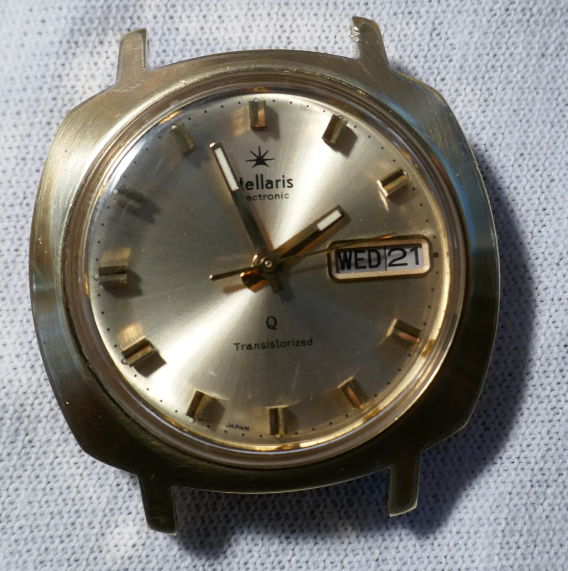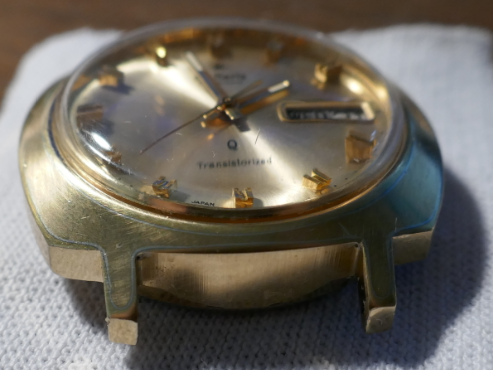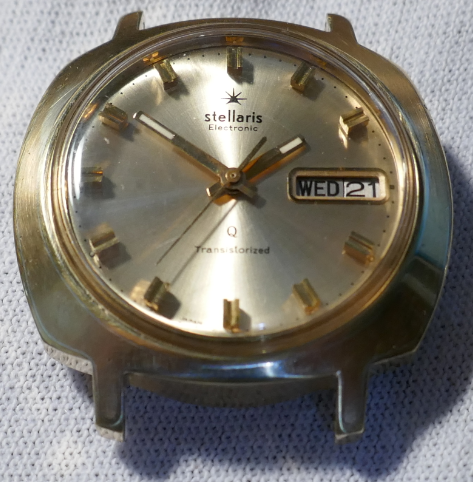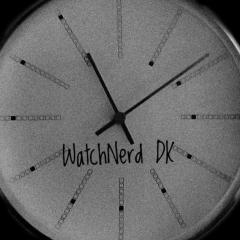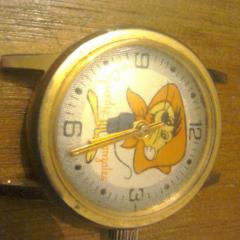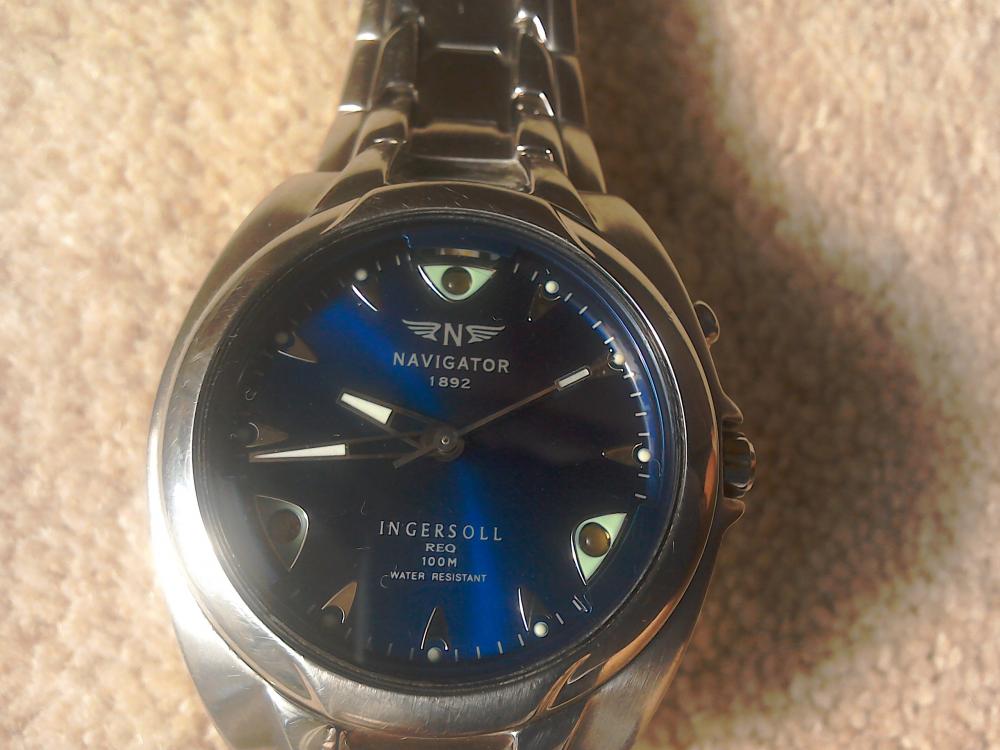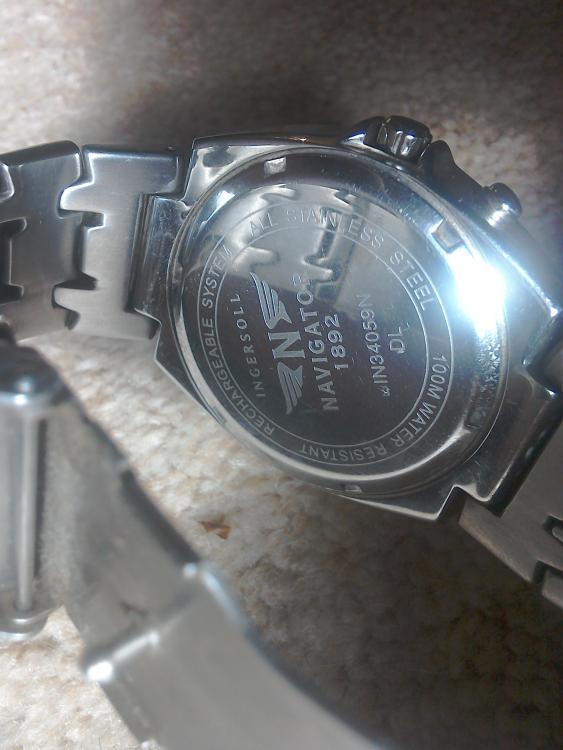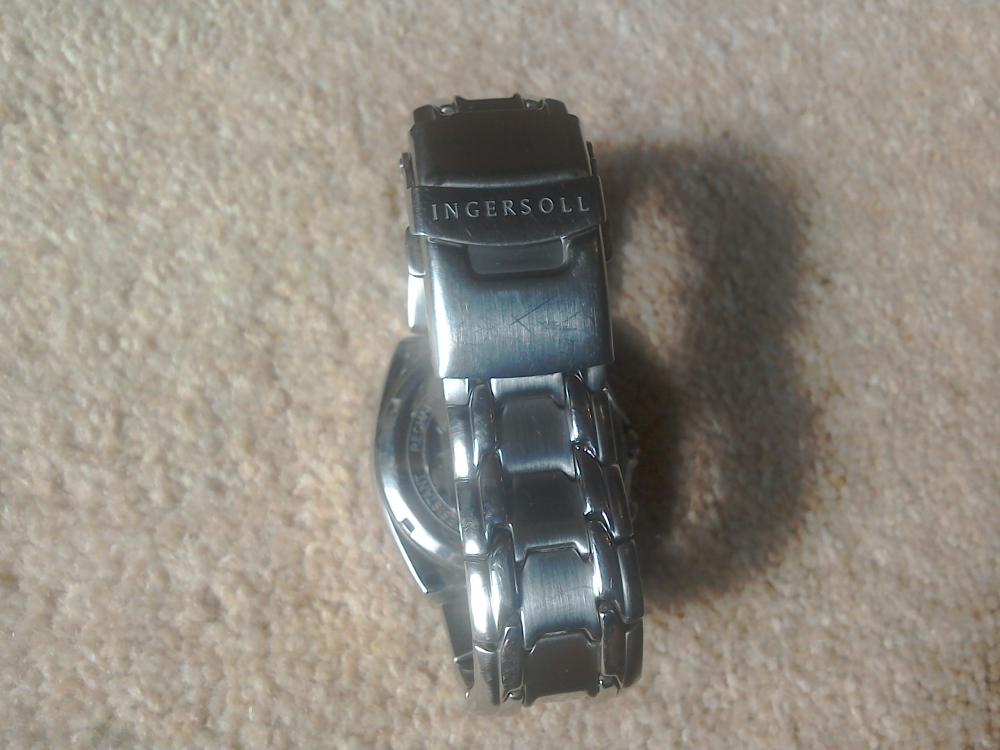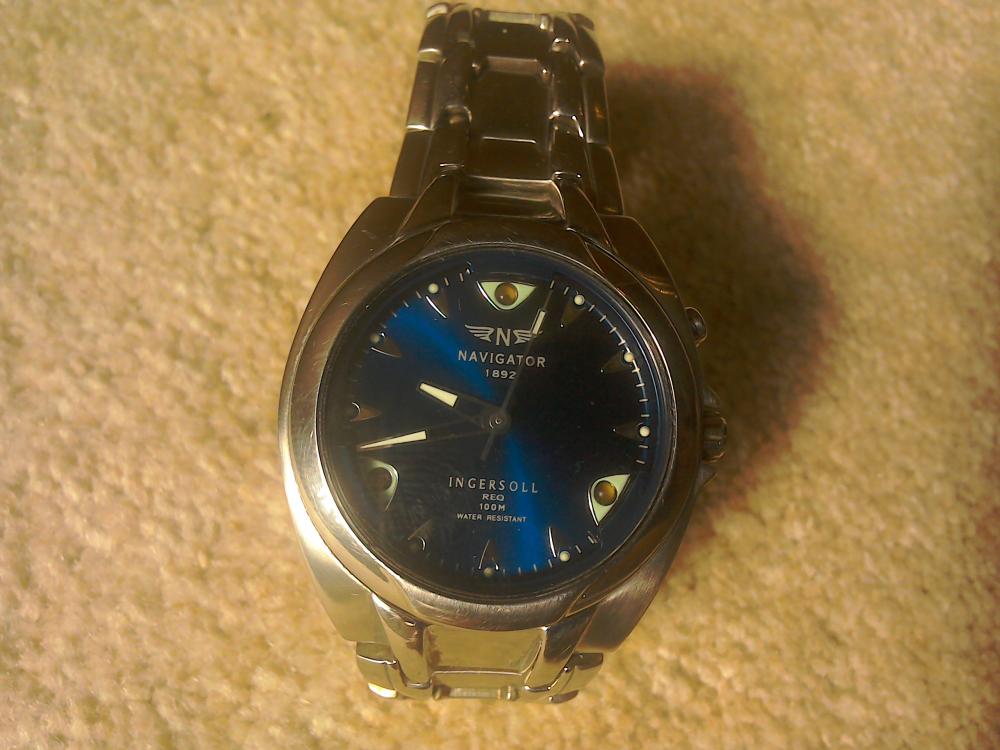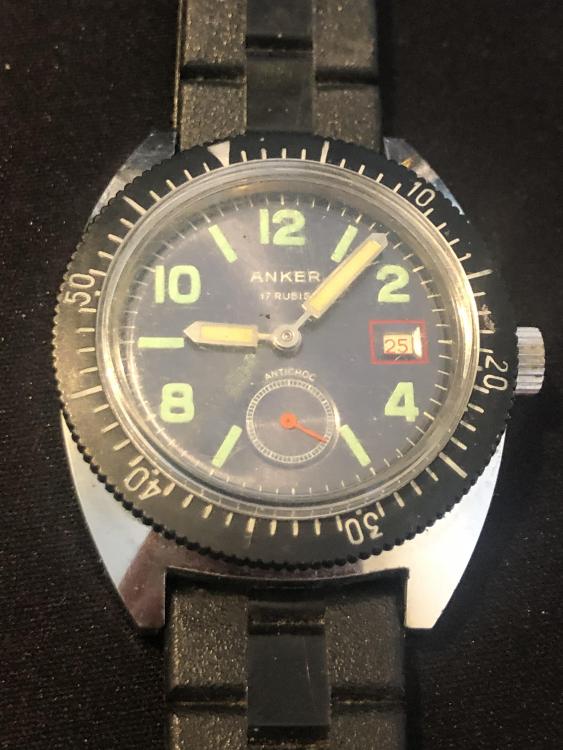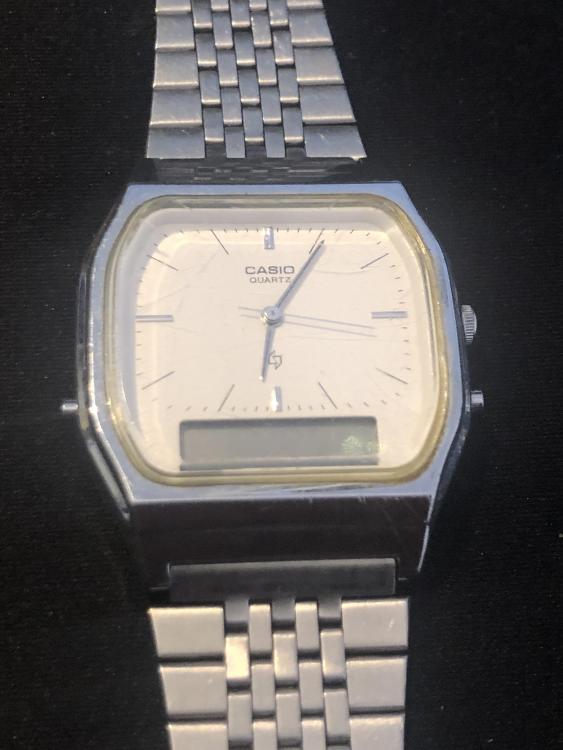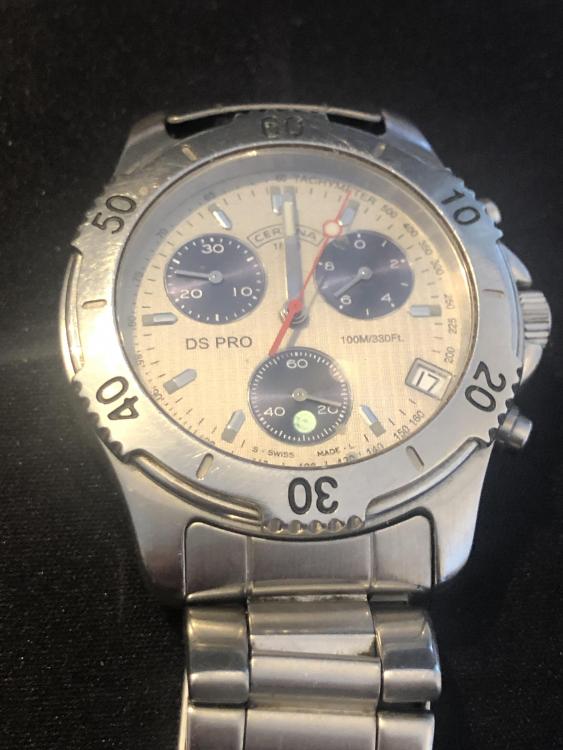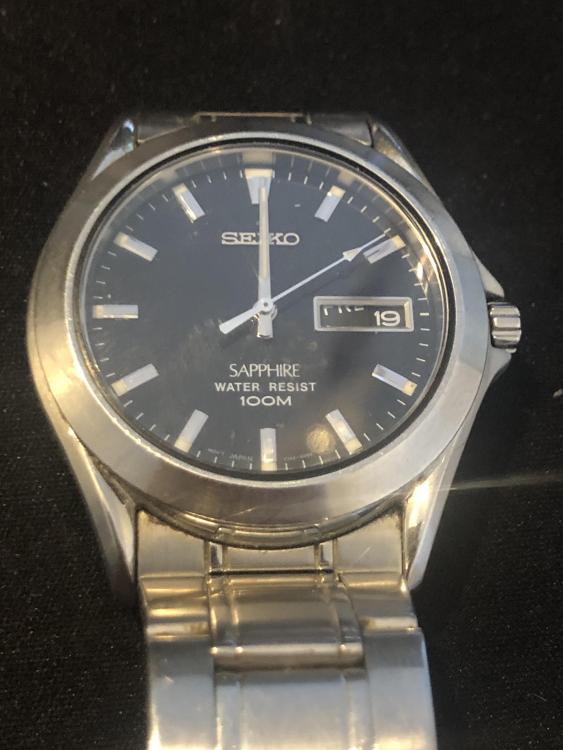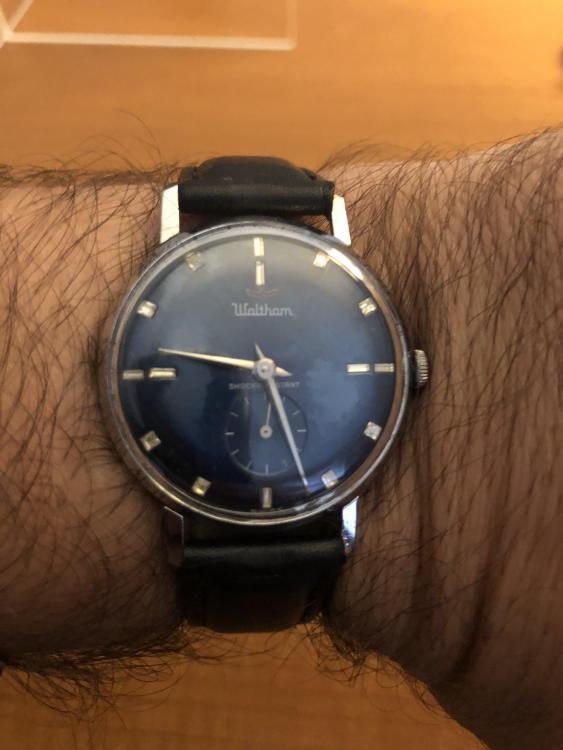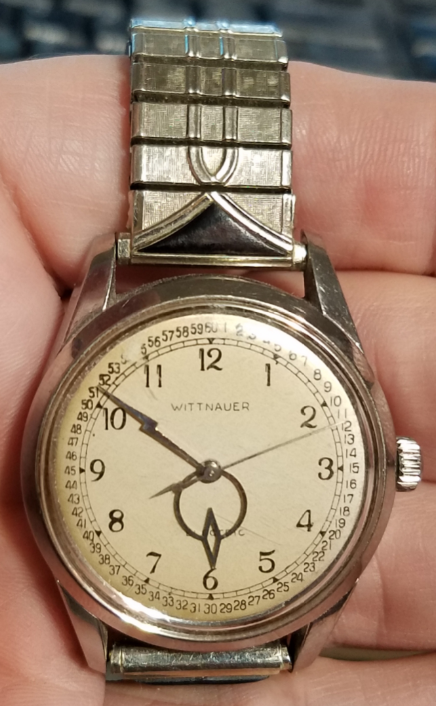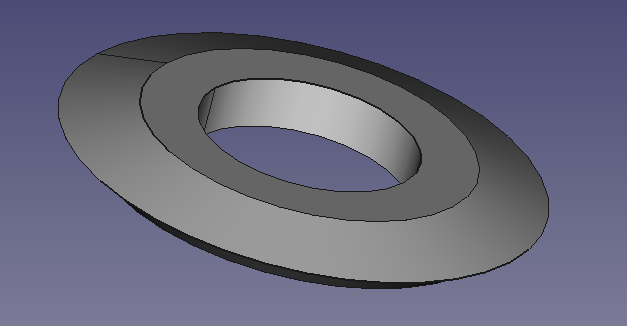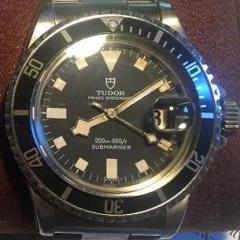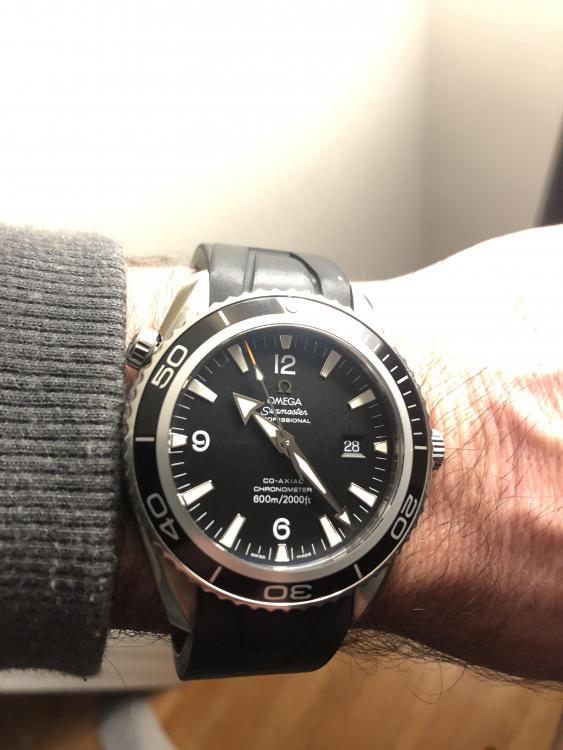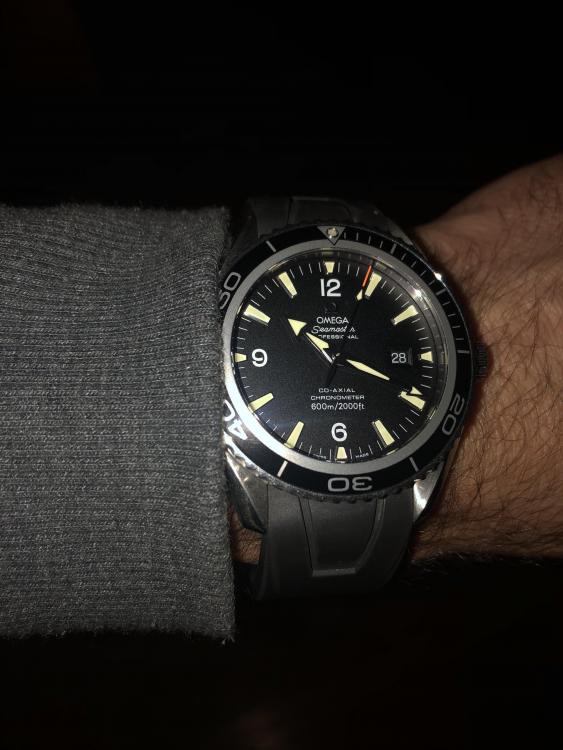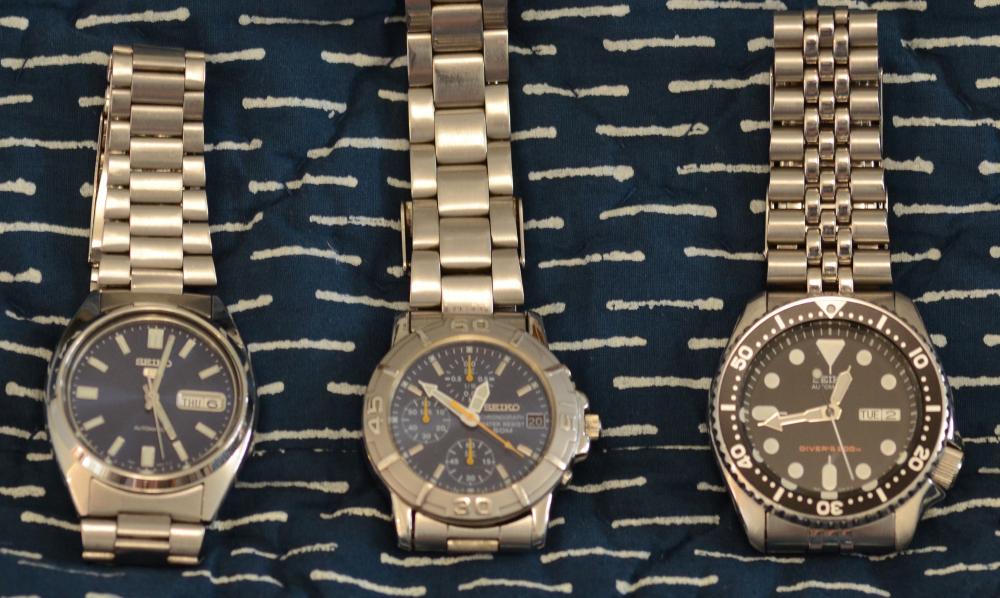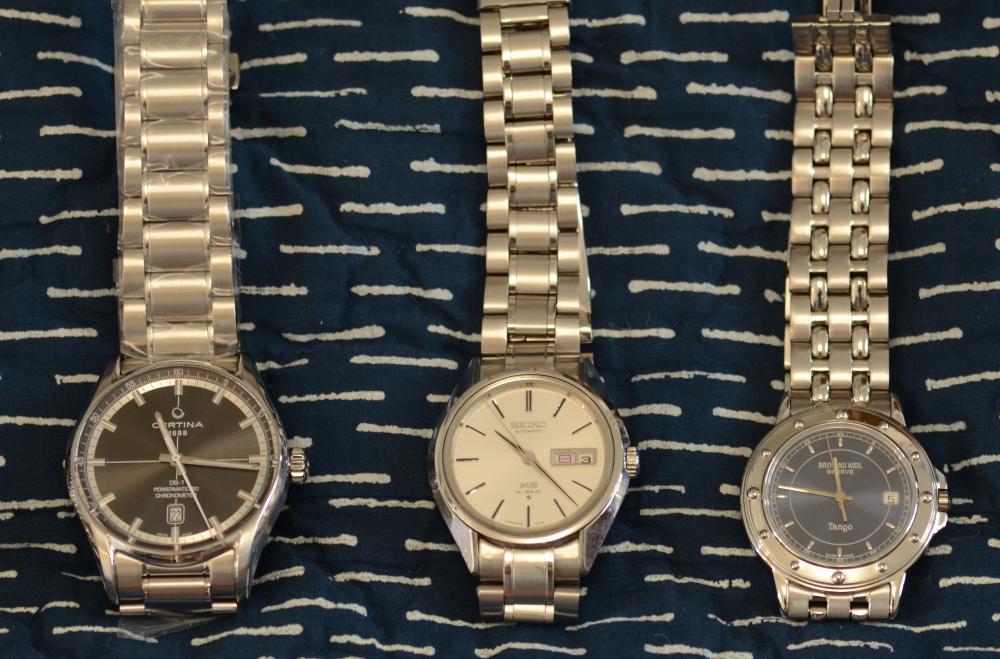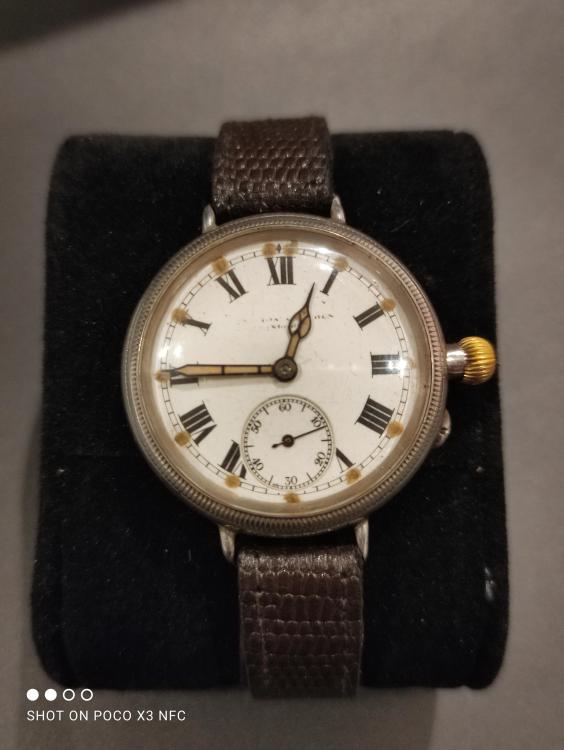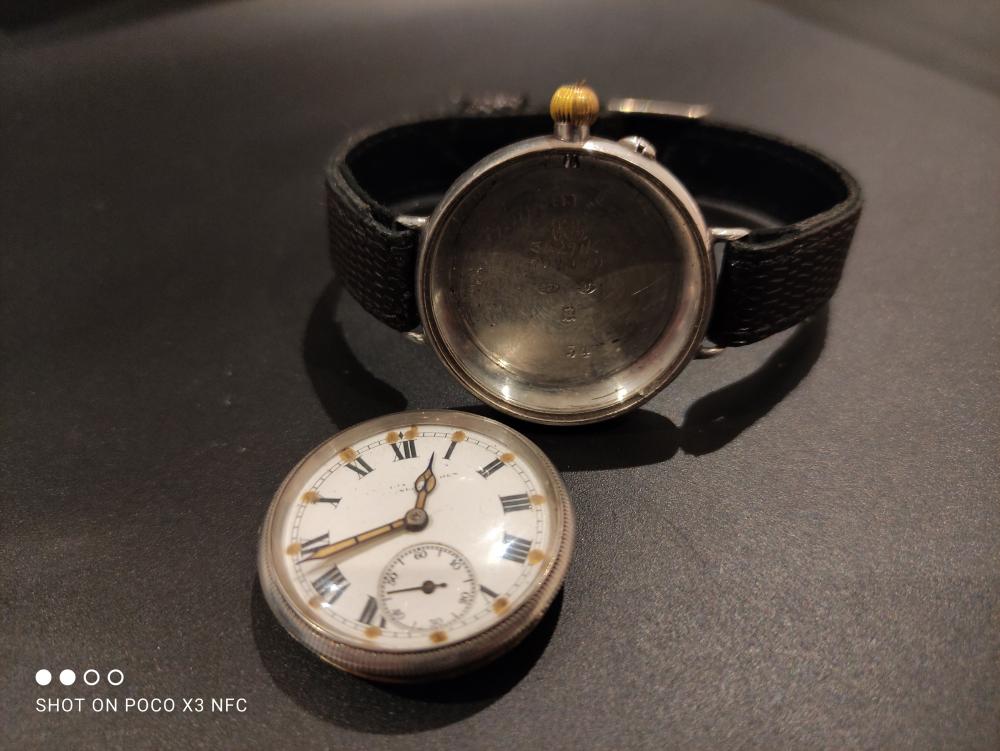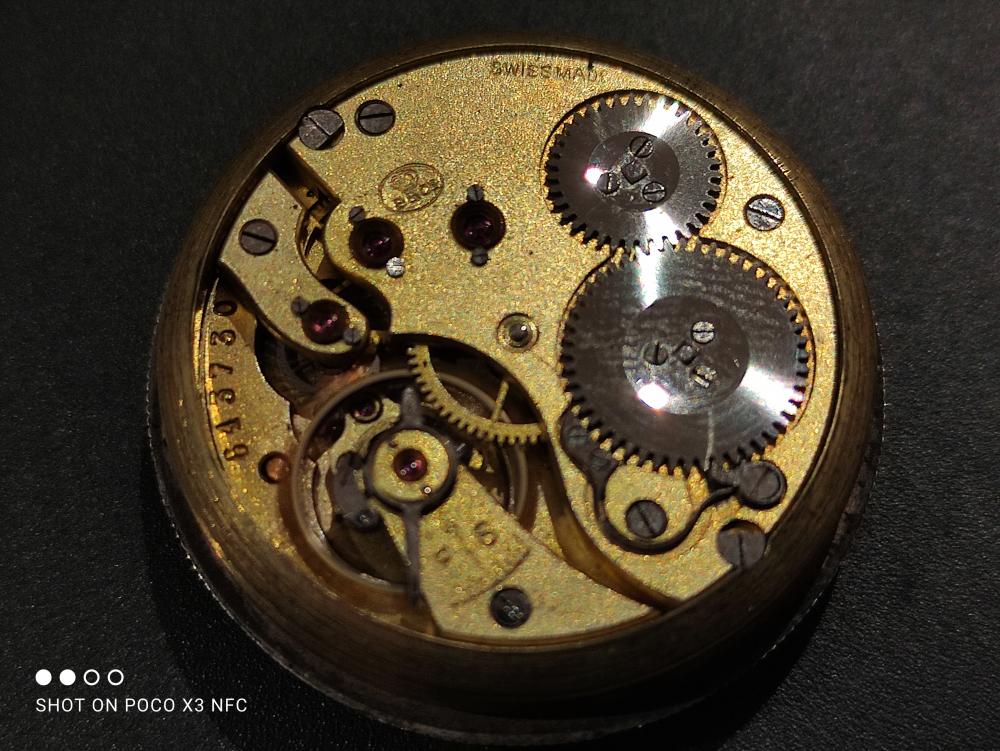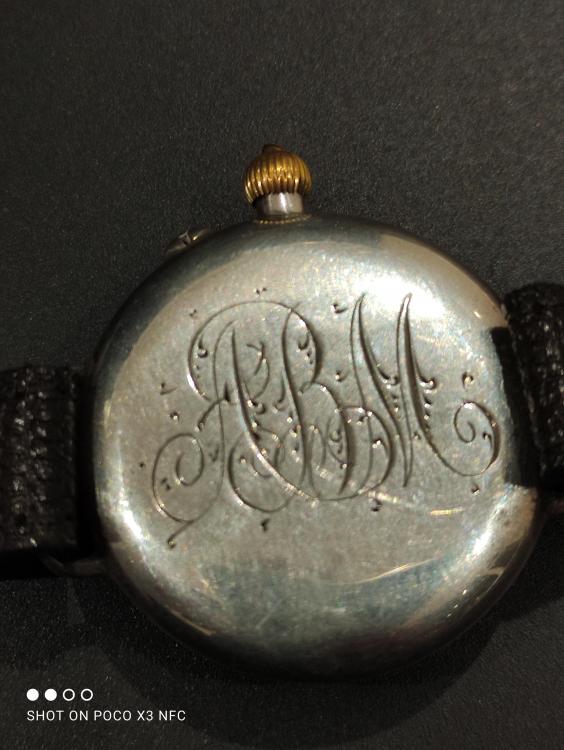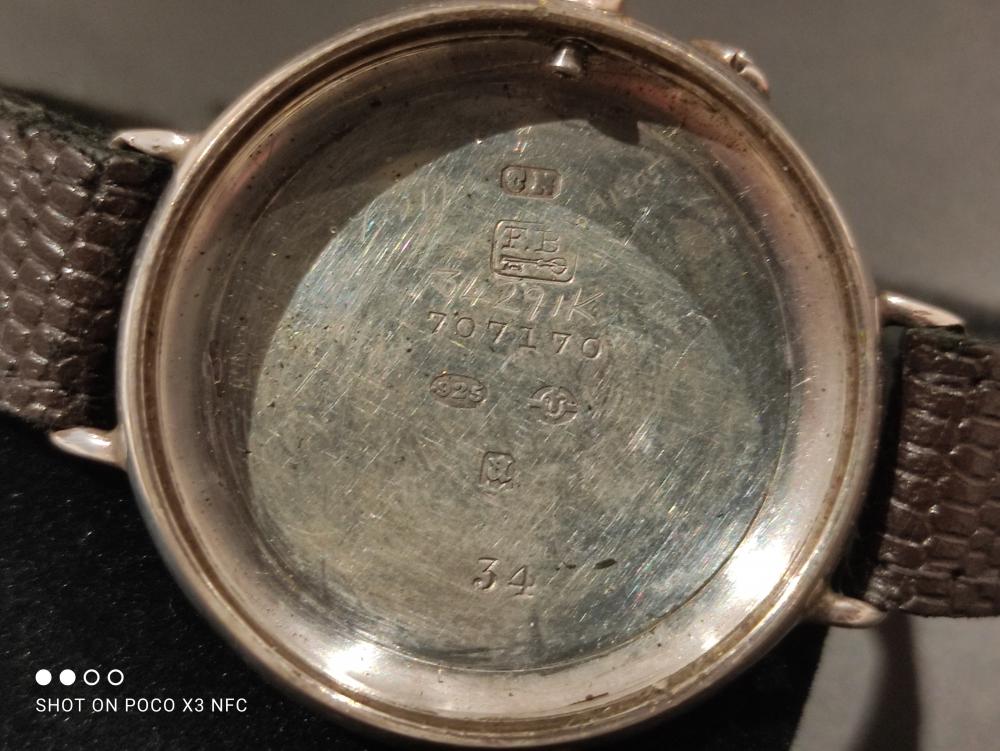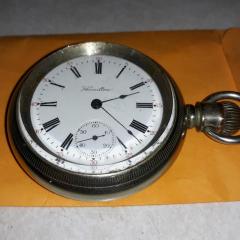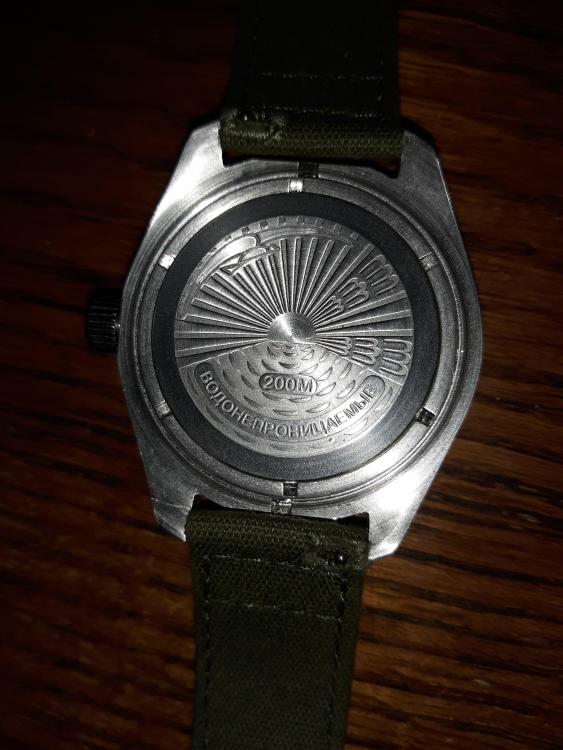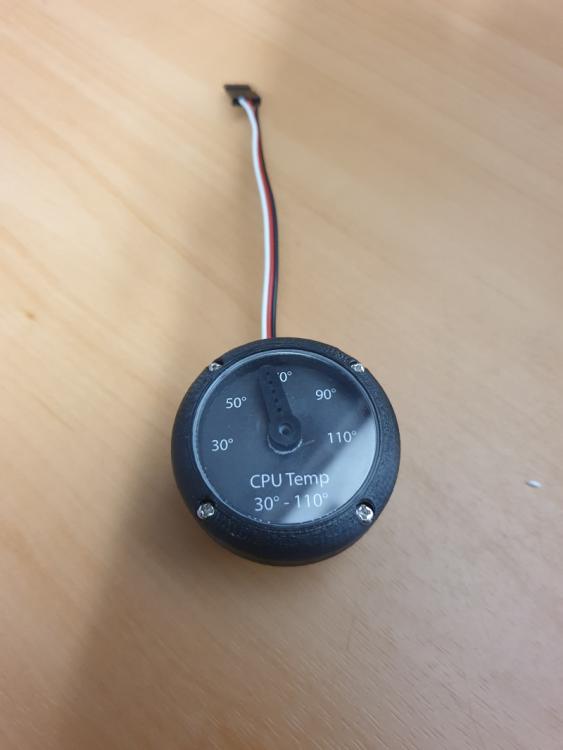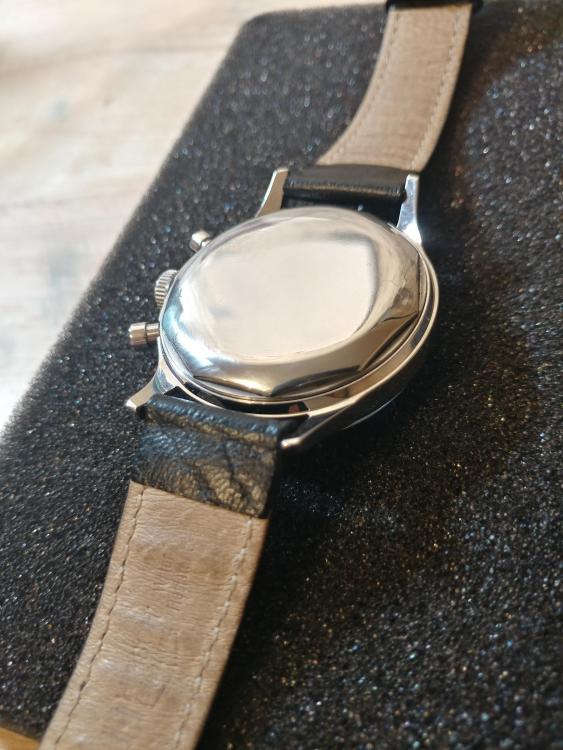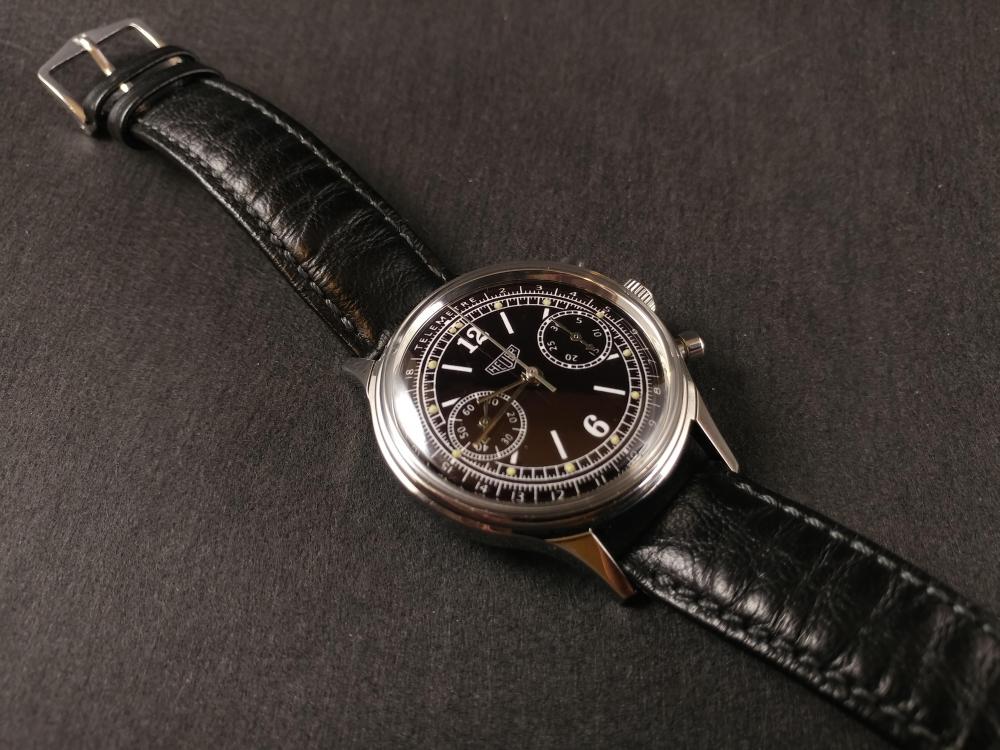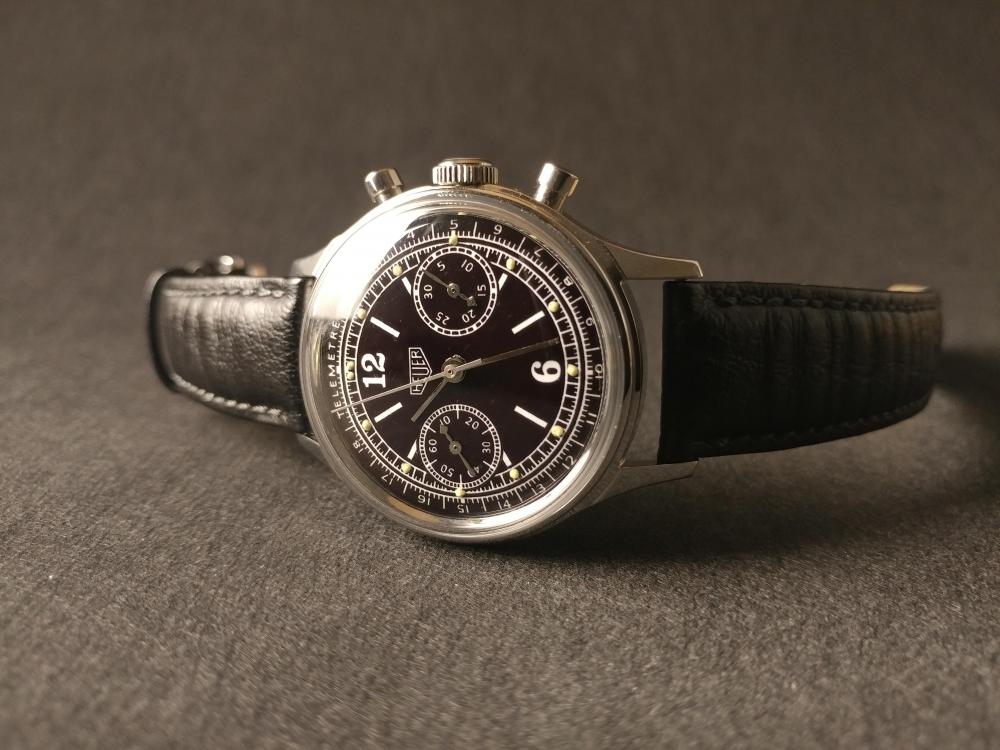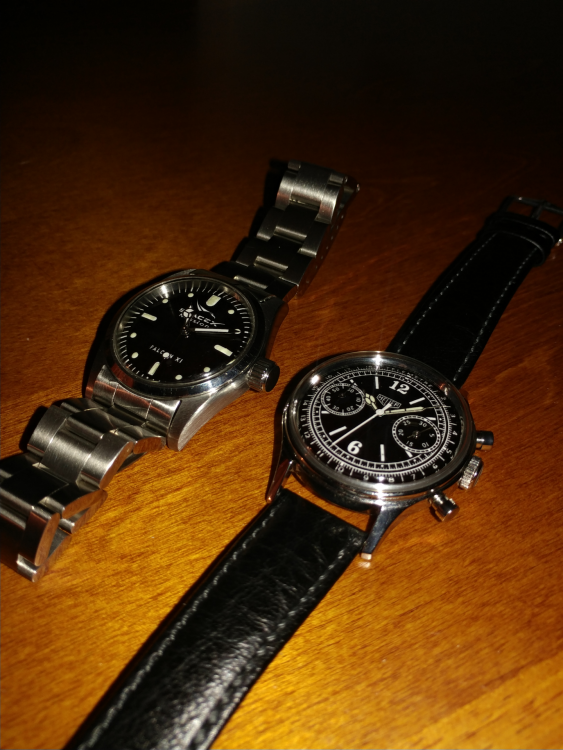Leaderboard
Popular Content
Showing content with the highest reputation on 02/03/21 in Posts
-
The problem is that for a beginner, sometime not having even an eyepiece, it's difficult to make these observations. And it's impossible to look by the side without removing the mov.t from case. Personally, after years, I still find difficult to ascertain what is going on under the cock in a 7S26. Regarding the shape on the horizonal plane, that is best observed with the balance running. While it is normal that dog leg side "breaths" more, you will be looking for any spot where coils get dangerously close. Same for an even hairspring clearance within the regualator, is checked with the mov.t running.3 points
-
Pedant note: a mobile phone can never be a timegrapher. A real albeit cheap machine doesn't have this problem, you place the watch on the stand fully closed and in any position, and it will read fine even if there is some other noise or music in the room. A sensitive but selective device.3 points
-
I'll admit, I'm watching too much YT, and doing too little. There are great talents, and very well equipped, that we all know. But what impresses me more is the likes of this:2 points
-
OK, I am gonna call this one "done" for now at least. I cleaned up the case, polished the crystal, installed a battery. It ran all night and kept perfect (to my resolution. This watch does not command any value on Ebay, but it is a very nice movement and kinda pretty. I set it to the right day, but did not want to have to go around to the correct date.2 points
-
I would measure the s/spring with a micrometer first to see if the spring is correct. As you say the pendulum is nearly at its end in regulation then I would do as others have said the next strength up.2 points
-
It's amazing what a whack can do to a watch especially if it was to move any of the regulation components. The problem with how long you've had the watch is it doesn't tell us how long it was sitting wherever it came from. It's amazing how long some stores have watches in stock. Really need a decent timing machine the Chinese 1000 or the 1900 outstanding well worth the money. Because otherwise were just guessing but I can make a guess. If for unknown reasons any of the regulation components have moved because after all this is a etachron system is always conceivable something has rotated or moved. If the hairspring isn't absolute perfectly centered in the regulating pins or they opened up. we can get some interesting timing especially because you cannot wind this watch up. The problem with automatic watches is how much movement to the need to wind up? For instance Seiko OEM watches give us a clue about this. They recommend if your winding by using the weight you need an auto wind. Turning at a speed of 30 revolutions per minute you'll be all wound up in 60 minutes. This means it's very conceivable that you're just not wound up enough and low amplitudes really screw up timekeeping. We really need a decent timing machine or we can do a heck of a lot a guessing.2 points
-
2 points
-
I see you're using a phone app and it would be nice if you had a real timing machine. So are all your observations of erratic timekeeping based upon the application on the phone or some other method? In other words if you set the watch to a known times standard. Then look at the watch 24 hours later what sort of variation are you seeing? Then a note regarding magnetism it can actually produce a sine wave effect. I've actually seen this before a really interesting sine wave.2 points
-
Just fixed up my old YEMA Jump hour from 1975ish. As shown earlier I polished through the chrome and had to re-plate it, and did a full service on it as well. This bad boy will be going for years to come ? 582951535_Untitled2_1080p.mp42 points
-
Another possibility is that when worn it doesn't wind enough, runs almost out of power hence inaccurately. That is where a cheap timegrapher comes very useful, it tells you right away the basic health of a watch. You may read that according to some is not a necessary tool for a beginner but the reality is thay for just 100 pounds there are now a lot of collectors and watch enthusiasts owning one.2 points
-
Magnetization is not a consistent cause for a watch running slow or erratically, anyway since "anything is possible" a blind treatment with GBP 5 demagnetizer box won' t hurt. The same device can always be useful to demagnetize screwdrivers and other tools.2 points
-
A bit of history helps, how old is the watch? and its service history? If only two years old then mainspring is unlikely to need replacement. Cleaning the residual dirt all around the backplate with a brush before and as you are removing the backplate is a good pratice to make a habbit of, a spec of dirt finding its way inside the movement as you remove the backplate expectedly causes problems. Apart from rate variation in different positions and just judging from your description , your watch could have easily got magnetized if you just put it on your smart phone for just a sec. Regs Joe2 points
-
You need a timegrapher for a diagnosis, but the cost of that or any work is much higher than a new NH36 mov.t, about 22 GBP shipped. if your crown/stem is a single part you will also need a new thread crown to install it.2 points
-
Hi, just introducing my newest addition. I am not usually interested in battery watches but this one caught my eye as it is rechargeable and came complete with the charger and spare bracelet links. It's keeping perfect time and appears to be virtually unworn. I don't know anything about this watch, age etc and if anyone can enlighten me I would be grateful. Bought at car boot sale for £12.50 so it didn't break the bank and seems very well made.1 point
-
Search eBay for "Komandirskie" and you’re bound to find several copies having the Paratrooper dial. It’s definitely one of the most common, and if you ask me, there’s a very good reason for it. I bought my copy in December (2017), but it’s not until now that I’ve had the time to service it, give it a new strap, and start to wear it. As the rest of the watch, the movement was in great condition, although all oil and lubricants had dried up. For some reason, the calendar cam spring was missing. Of course, being a Russian watch designed for military use that can take a beating like few, that won’t stop the calendar mechanism from functioning, but it will make the date rollover slow rather than click. Fortunately, I have several Vostok calibre 2414 scrap movements to scavenge for spares. As can be seen below 6 o’clock, this copy has the "ЗАКАЗ МО СССР" (ORDER OF MO USSR) marking meaning it’s from the Soviet era. According to this blog post, it means "By Order of the Ministry of Defense of the Union of Soviet Socialist Republic". I paid $62.50 for my copy on eBay (seller tdn74-2008), and although you can find working Komandirskies for $20 including shipping I was more than happy to pay the price (I usually am when I find these IMO more than affordable Russian watches in great condition). I always promote this video to anyone who's curious about Russian watches, Vostok Amphibians in particular, which is the "big brother" of the Komandirskie!1 point
-
When I see engravings on a movement say adjusted in three positions or five or more, I know I am looking at a good percision movement. However some just say adjusted, no mention of positions, What does that mean? Must have been sitting in some position to get adjusted. How different are adjusted from unadjusted ones? TIA for your responses. Regs Joe1 point
-
Hi Very similar to the 1147 except for the removable end stone on the bridge. check out the similarities here http://www.ranfft.de/cgi-bin/bidfun-db.cgi?10&ranfft&0&2uswk&ETA_11471 point
-
It's still a long shot because of the age but we could use the fingerprint system from the setting parts but we need a size which I don't see? The reason I need a size is because without a size I have to go through each of the sizes looking to see if anything matches. On the other hand how many to look at? https://blog.esslinger.com/watch-size-ligne-conversion-chart/ The fingerprint system is by size of the movement which is why asked. If this had been a smaller size there would be so many images I wouldn't of wasted my time. Fortunately the setting parts unique enough that I can skim through relatively quickly until I got to 17. You get the pick and choose which one you like the best. If you had the physical bestfit book and I don't know about the PDF I'm assuming they scanned it properly. If you had the physical PDF book than the part would exactly fit on the book. So each one of those should be different you have more than one to choose from. Then it was really helpful you got one of the names right.1 point
-
This is my personal watches. I got the as birthdays presents over the years. The blue Seiko I got from a work project as thanks you. They were daily use and abuse. Except the Anker. Im not in to quartz. But I will change batteries, service, and and buff them up. Not in picture. But daytime I use a Applewatch. Hopefully it will soon change to a pure mechanical watch. That I have restored my self. The Anker is a very beloved watch. As a kid, I got it new from my father in 1978. A year later he passed away suddenly. It is totally original, plastic bracelet and all. I pretty much never wore it, because it was too big at the time. He was a sports diver, and of coarse. He got me a divers watch. I remember trying to punch a new hole, to get it to fit it to my wrist. But was still to big. And when I grew up. It wasn't cool anymore. So it is pretty much scratch free. It has a problem that I need to look in to later, when Im much more experienced. I remember many years ago. I tried to wind it up. But something broke. And it now only moves the hands. Even in winding position. I will look in to this with great care! I have recently searched high and low about this particular model. But came up with nothing. I find models with the same bezel, and hands. But no one with a separate second "bullseye?" if anyone have info where to find Anker info. I would be much appreciated! In the near future, I hope to find a cpl of pocket watches. Also find my self starring at Landeron movements. Cheers!1 point
-
Thanks a lot for that, I have a couple of non-working Seiko 3303's that I can now look at in a new light.?1 point
-
1 point
-
1 point
-
1 point
-
Several years ago, I dug this out of my dad's box-o-watches. Further research indicated it is somewhat rare. The battery that it used is no longer available--it is shaped like a flying saucer with lines to fit the case back. Needless to say, no modern battery would fit this profile. Fortunately, 1.5 volts is the battery voltage required and others had already discovered that a 389 was the correct thickness. Someone in the UK had produced some spacers that would fit in the case back and hold the 389. I tried to contact him...to no avail. Undaunted, I designed a spacer and printed it with my 3D printer. Voila! Works great. The pictures are of the watch and the spacer as illustrated in the 3D CAD tool.1 point
-
I have never seen an electro chron dail like this. I wonder if it some sort of special print.1 point
-
This, is one of my favorites. I clearly remember when I first saw it: I used to work on Long Island and come back to Connecticut each weekend. I saw it on a billboard north of the city, on 95. The new Omega Seamaster Planet Ocean. I wasn’t crazy about the name, but coming off the Pierce Brosnan bond watch this was (and is!) stellar. Note I liked the blue bond watch before the turn of the century, and I had a white faced GMT during that era (because I saw so many blue ones). I miss that watch sometimes but legibility wasn’t the best actually. Fast forward a couple years and I’m at the maul with a couple good friends and I decide to pop into an Omega jeweler there. They had a pre owned all black 45.5mm planet ocean on the bracelet. I wanted the “big” one, and still enjoy it, but I think a 42mm version would be even more perfect. I had a rubber strap put on because it just plain looks better that way. The Orange version shown on that billboard looked awesome at the time, but I thought it would fall out of fashion in time, and it has, as far as I’m concerned. Mine is the first generation. Aluminum bezel inset and painted numerals. The omega logo is applied, like the vintage dials. I appreciate that detail. The newer ceramic bezels and applied numerals are arguably better, but not to me. This has been back to Omega once in the ten or more years I’ve owned it. NJ service center did a fantastic job, and only replaced what I authorized. Light touch up on the case and it’s been perfect ever since.1 point
-
Like many children of the 70's in the U.S., my first watch was a wind-up Timex. No second hand. I think I was 10 years old or so. It was water resistant (thankfully) and had a golden colored bezel, squared-off hands and dark blue face. I don't recall what happened to it -- it probably succumbed to some physical neglect in my early teen years, which put the lie to the term "shock proof." (As in "shock proof, but not teen-proof" -- not a catchy marketing phrase, but nearer to the truth.) The first significant watch of my adult life, I bought in my early forties. It was/is a Hamilton Khaki automatic. . . one made prior to the current long-power-reserve model. I say "significant" because even though I wore it daily for years it was the watch that started me thinking of timepieces in more than simply utilitarian terms. I actually purchased it because an older cousin, for whom I have a great deal of affection, wore/wears an Omega Speedmaster -- the original Moonwatch version. He was, at the time he bought it in the mid-1970's, a helicopter pilot -- and this no doubt contributed to my sense that the watch was an active accomplice in his various acts of daring. Anyway the Khaki was the watch I could afford that bore -- in my mind at least -- the greatest resemblance to the more desired timepiece. I put the Khaki on this morning, but just switched it for a dressy Eglin automatic. Seriously, who wears more than one watch a day? It's a sickness, I tell you. But what a way to go . . . So how about it WRT? What was your first watch and then the watch that set you on your current path? Inquiring minds want to know.1 point
-
Hi, As a new member here to ask for help I thought the least I could do is contribute what I could, so this is my simple collection. The Certina still has it's wrappings as it just arrived. Seiko 5 7S26-3040 Seiko (quartz) V657 8060 Seiko SKX007 Certina DS-1 Powermatic 80 COSC King Seiko 5626 7113 Raymond Weil Tango 5560 Andrew1 point
-
1 point
-
Try different hat. This is an interesting question and I am also interested in the answer.1 point
-
Yes the battery is new. Contacts look okay, but I'll give everything a clean up before I re-assemble. Not optimistic though. Looks like I'll have to find a replacement circuit board and coil assembly. Regards, Kim1 point
-
Hi @aoleite. I'm conscious I'm in danger of just repeating what Joe has already said but noting you're a newcomer let me expand a bit on Joe's information: - Watches usually come in 'families'. So a watch movement will typically have a base model. Additions - auto wind mechanism, day, date and so forth give rise to different model numbers in that family. But typically they are building on a base. - In terms of finding useful information on a movement, and that family information, then the ranfft.de website is a goldmine! - Here's the information for your movement as an example: http://www.ranfft.de/cgi-bin/bidfun-db.cgi?10&ranfft&0&2uswk&AS_1906. As a 1906 this means a 21600A/h automatic movement with day and date functions. - And because of the family nature of movements it means that in a lot of cases (but not all) things are modular ... the additions just build on the base. It also means that base parts are interchangeable. - It also means if you can't find information on your exact movement number then searching around the family can bring results. Go to YouTube and search for, say, "as 1906 movement" and nothing much useful comes up. ? But now swap that 1906 to 1900 in your search phrase and you'll find a lovely three part video series directly related to your base movement! ?1 point
-
Usually my questions get answered by the first response, this one received none. Must be his hat.?1 point
-
Our cat is a Siberian and hypoallergenic. I think the theory is that Siberians often have less of a particular protein in their saliva, which is what folks with cat allergies react to. We have had very, very cat-allergic folks visit the house with no discernable reaction. And, as I mentioned, she catches all our mice. Hair everywhere though. ?1 point
-
I'm allergic to both (what most people consider badly allergic to dogs, and super seriously allergic to cats), but have always had dogs until just over a year ago. My last dog I got in college, and he died two weeks after my daughter was born. He was old and blind (no eyes). Sweetest, friendliest dog ever. Did not discriminate; everyone was a friend and worthy of being ran into softly (his version of a hug). My wife's office is dog friendly (or was when people went there), and he was very much a favorite. Even other dog owners and emphatically non-dog people told her he was their favorite office dog. There was a painting of him on the wall, and they named a software library after him at the company. Flowers were delivered when he died, and we live in the mountains... deliveries don't happen here. He was always very quiet and chill. The most vigorous he'd get for attention involved him sauntering up, putting his chin on my leg, and wagging his tail gently. He would have been a great watchmaking buddy save for the husky half of him shedding everywhere. Still, I'd happily clean those little black hairs out of every movement if he were still here. Best dog I ever had. A young photo when he still had eyes and could see.1 point
-
Magnetization can only make it run fast, not slow. Additionally, it won't be a little fast. What's happening is the coils of the hairspring stick together, and that effectively takes a huge amount of the spring out of play. It's like moving the regulating pins halfway around the spring. I've not seen the phone timegrapher output, but assuming the triangles are recorded beats (clicking sounds really), unless you have a good explanation for those guys way out on the sides, you may check that your hairspring is in plane. It might be hitting the balance wheel on occasion. When it does that, it sucks energy out of the balance, and slows it down. Could be a lot of other things, but if I saw that on my timegrapher I'd be peeking in the side to see if I accidentally bumped the hairspring or something. Could be you just barely touched it while adjusting the regulator, and pushed it down a little between the pins. The pins on mine are a little tight, and I think that's why it takes a few hours of wearing for the watch to settle in (always slower, which would make sense with an effectively elongating hairspring).1 point
-
I have a new NH38 movement in an old Seiko 5 case. It's the same as the ubiquitous NH35, but without any date function (the movement that replaced your 7S26C; it's substantially similar but with the addition of handwinding and hacking). Out of the box, it was within spec, but it's a generous spec, and I figured I could do better. I have a Chinese 1900 timegrapher, so I wanted to experiment a bit for myself. I wore it for a week like normal, and averaged the error out over the seven days (I forget where it started, and I didn't keep my notes). Then, I adjusted the error out accordingly only in the dial down position. Repeat until I got it where I was happy. What I found was that there is a prolonged settling in between what I initially adjusted and where it settled, and where the same position would be a week later. It seems that some jostling helps. I would let it sit and settle on the timegrapher for however long, and it still seemed to wander a bit (in the slowerly direction) after I wore it for a few hours. At least that's my working theory... I could be missing a puzzle piece, and I'm sure someone will be along shortly to fill that in if that's the case. I eventually got it to -2 and change seconds a day and called it good. This took several weeks, and is definitely NOT practical for a professional (who probably knows better anyway). To get there, I had to adjust it to +9 on the timegrapher. I haven't looked to see where that settled out to, or how the positional error breaks down. It has not yet been seven days in the -2-and-change adjustment, and as of right now it's -5 and change seconds after a few (4) hours shy of 3 days. For comparison, I performed the same experiment with the same methodology at the same time on a ETA 2824-2, and it wanted precisely 0 dial down. It's settled out to -.25 to -.33 S/d. Currently at 4 seconds slow over 10 days, but it's morning and just sat stationary for 8 hours or so. I haven't paid super close attention to this yet, but anecdotally it seems like the ETA slows down overnight and catches up during the day, while the Seiko is the opposite. I'll start paying closer attention to this going forward. Different movements are made to differing levels of precision. Lower precision is cheaper, but at the cost of accuracy. I feel like (as you seem to also feel) activity levels play a part. The Seiko is my "shop watch" for use working on cars, woodwork, doing things around the house, etc. The previous iteration survived all manner of hammering (shock), welding (magnetic fields), chemicals, and various other extremes of abuse without any noticeable degradation in performance. A car wreck (net 75 or so mph, head on, small overlap, I was in a classic car with no safety features, and my watch hand flew off the steering wheel and starred the windshield) eventually killed the watch... Or so I thought. The cause of death wasn't actual death, but a small black hair lodged in the escape wheel... A good service would have brought it back to life. Unfortunately, thinking it was completely wrecked inside, I took it apart early in my watchmaking explorations, and failed to get it back together without borking the hair spring.1 point
-
I would take the back off and pay close attention to the action of the balance wheel/spring for its action to make sure its free and the coils are moving cleanly. Having said that its more than likely the case its is in need of a service/clean and oil and possibly a new mainspring as they do get tired, being constantly wound and re wound.1 point
-
1 point
-
1 point
-
This is my (modified - gilded hands) everyday beater! Thanks for the pictures "comrades"! I never saw that 31 КАМЕНЬ Komandirskie dial before. Absolutely amazing! I feel warm ar heart these watches are finally getting some love here on WRT. I've been waiting for it, and I couldn't agree more @Poljot, these watches seem able to run, and run well, no matter how dirty and neglected they are. If you would take the dirt from a well ticking Vostok not having been serviced for a decade or two and distribute it evenly among a hundred Pateks, I am positively sure it would bring all hundred to a dead stop. The historic perspective is fascinating as well as these watches were never designed to meet a free market, but to provide reasonably precise and personal time keeping to the masses. Still then to see all the love and creativity go into the dials of these watches is pretty spectacular. To quote Sting: "We share the same biology, regardless of ideology".1 point
-
I also noticed that by default I put Vostok on my wrist more often than other watches. It just feels right, it's very accurate and also I am never concerned about humidity, freezing temperatures or extreme heat. I do not have to "be careful" while wearing it ? as this watch can take almost any unintentional abuse ? .1 point
-
1 point
-
Just found the video I linked to in my first post. If you're curious about the Vostok Amphibia you won't be able to see this video without wanting one. I guarantee it! ?1 point
-
My 13 year old son is very much into computer coding and has moved so far beyond my coding ability that I don't understand half of what he is telling me he is doing now, but I thought I would post a picture of a project he did over the weekend. But first I need to mention he is a big fan of aircraft clocks and very quickly took my Russian AChS-1 'MIG clock' to sit beside his computer and then when I restored my WWII German Kienzle aircraft clock he very quickly grabbed that one too. But back to my son's project. He has always wanted an analogue dial in the style of an aircraft clock to display the CPU temperature of his computer, so he decided this would be his weekend project. I found him a micro servo in one of my drawers left over from my RC plane days and gave it to him. He then wrote a C# sharp program for his computer that runs in the system tray and reads the temperature of the CPU and passes this value out on one of the USB ports to an Arduino he had programmed to read this value and drive the servo with a PWM output. He then designed a dial inspired by the 'Mig Clock' at half scale on Fusion 360 which he made sure the dial size would fit one of my larger spare watch crystals. We then 3D printed it on Sunday and he then designed a dial to fit it and finally I fitted the watch crystal to it for him tonight and here is the finished product. He now has the C# program running on his computer passing the CPU values to an Arduino driving his analogue CPU temp gauge. He has plans to expand this and create another gauge for the GPU temperature now and is talking about changing the case design to incorporate an RGB LED, so it can shine blue, green or red depending on how hot it is. When I was 13 I did enjoy coding in 'BASIC', but never did anything that complicated. How times have changed. Tony1 point
-
Looks exactly like the original part, just 6% smaller. I would love to be able to squat like that though.1 point
-
Nice watch. I am dangerously getting interested in buying me a co-axial, not to mention the chrono grade movement. Wear it in good health. Best wishes.1 point
-
Super-cool! But technically not a bull head. The bull head has the pushers at the top, like the horns of a bull.1 point
-
1 point
-
It has gained mythical status and can only be accessed by those who roll up one trouser leg and know the secret handshake.1 point





